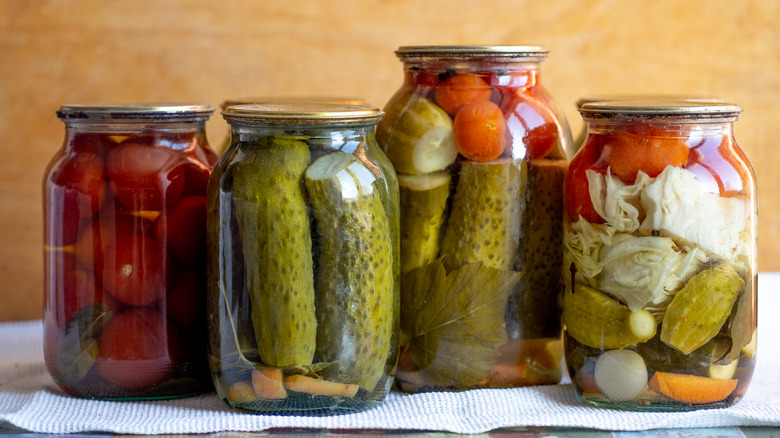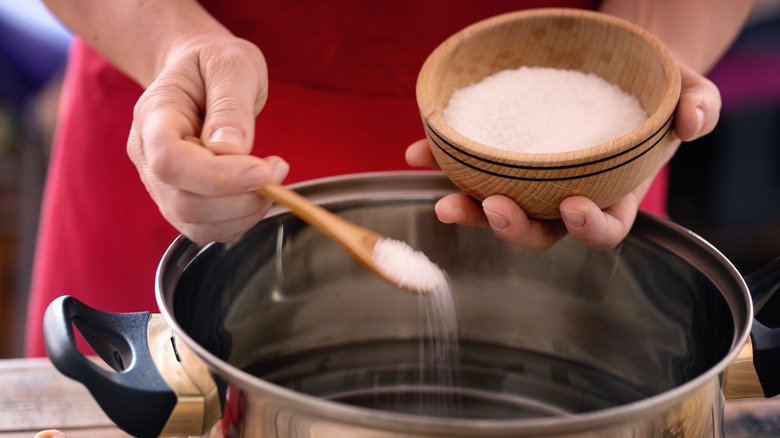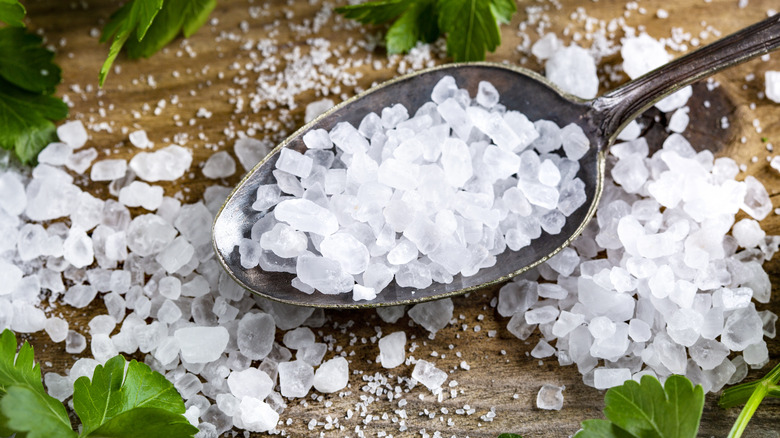What Exactly Is Canning Salt, And How Do You Use It?
Salt not only enhances flavor, it's also a powerful preservative. That's why canning salt is such an essential ingredient when making pickles and other fermented foods.
Unlike table salt, canning salt lacks ingredients that prevent it from clumping. It also lacks iodine, a mineral that benefits thyroid function. While anti-clumping ingredients and iodine are good additions to table salt, they aren't ideal for pickling. Table salt won't cause any adverse health effects when canning, but it will diminish the quality of homemade pickles.
Because canning salt is extremely fine, it dissolves quickly in water, whereas other types of salt granules are larger and coarser, so they don't break down as well. This recipe for spicy southern pickles illustrates how canning salt is typically used; the recipe calls for 1 cup of pickling salt (aka canning salt), which is boiled with water, vinegar, and sugar. The salt solution is then poured into jars containing cucumbers, which will blossom into tangy pickles about two weeks after canning.
For people limiting their sodium intake, using less salt when canning might seem like a healthy option. However, adjusting salt content is only acceptable when it comes to certain recipes.
Is canning salt really necessary?
According to the National Center for Home Food Preservation, canning salt is an important component of most fermented foods. Fresh-pack pickles are an exception, however, as the use of vinegar in the recipe preserves the pickles and prevents the growth of harmful bacteria. Accordingly, you can reduce the content of canning salt in fresh-pack recipes or eliminate it all together. When making traditional pickles and sauerkraut, you must follow canning recipes to the letter, especially when it comes to salt content.
In addition to preventing the growth of bad bacteria in jars as food ferments over time, the use of canning salt also fosters the growth of good bacteria, or probiotics. Probiotics are found in many fermented foods and said to benefit digestive health when consumed regularly. While the use of salt is non-negotiable when fermenting most foods, you may wonder whether salt substitution is possible if you find yourself lacking canning salt. While it is, you must consider the options carefully.
How to substitute other types of salt
When seeking a canning salt substitute, consider additives first. In this case, kosher and sea salt are the best options because they typically don't contain additives. However, you should still double-check that the brand you're using does not contain anti-clumping agents and iodine. Once you've determined that your salt is free of additives, the grain size next needs to be considered.
Remember that canning salt is incredibly fine, which means a cup of canning salt actually contains more salt than a cup of coarse kosher salt. Fortunately, you can convert the recipe amounts to ensure you're not using too little or too much salt, both of which will cause unwanted outcomes. For instance, if a recipe requires 1 cup of canning salt, you can typically substitute with 1 ¼ cup of kosher salt. The conversion for sea salt is slightly different, with 1 cup of canning salt being equal to 1 cup and 4 teaspoons of fine sea salt (as opposed to coarse versions). You can also break down very coarse salt in a food processor, in which case recipe amounts could stay the same. Keep these tips in mind, and you'll be canning like a pro in no time.


